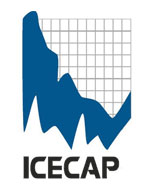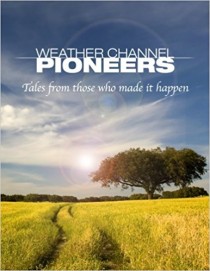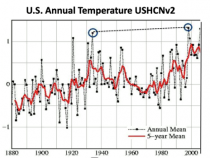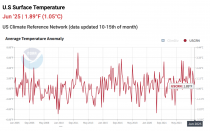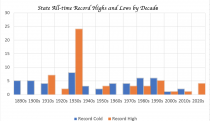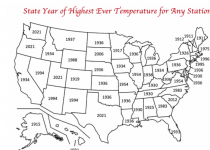By Joseph D’Aleo, Meteorologist/Climatologist
The authors claim: Extreme weather events are driving short-term surges in food prices around the world. Until we get to net-zero emissions, extreme weather will only get worse, but it’s already damaging crops and pushing up the price of food all over the world. The spikes are linked to heat, drought and heavy rainfall conditions, the report said.
Actually, extremes of weather are part of our climate system and are not worsening.
The warming that is claimed is primarily at nights and focused in urban locations. The urban heat island as it is called, actually reduces freeze and frost problems, benefiting crops early and late in the season. Daytime heat was far worse a century ago. The urban heat island drives an exaggerated view of climate change. This was recognized by NOAA when the temperature data was first introduced.
National Climate Data Center Director Tom Karl’s paper defined the Urban Heat Island (UHI) adjustments for the first version of its first Climate network USHCN in 1988:
He wrote “… trends of surface air temperature computed predominantly from urban station data are likely to have a serious warming bias of 0.34C/decade (about 6F/century)… The rate may have increased after the 1950s, commensurate with the large growth in and around airports (up from 20% to over 70%).
“Our results and those of others show that this ‘urban growth’… is serious and must be taken into account ... assessing temperatures.”
The Urban Heat Island in the 1970s and 1980s was increasingly recognized as a data contaminant that reflected a diminished cooling at night due to heat that was trapped in the urban areas.
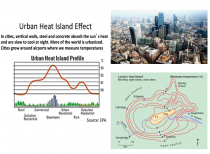
Enlarged
Crops are not grown in urban areas where growing urban heat island are resulting in slower cooling and higher temperatures at night. The original temperature data starting in the late 1980s had to be adjusted for the local nighttime trapping of heat. In 2000, the corrected data was showing the Dust Bowl heat of the 1930s were still warmest.
Inexplicably, the UHI adjustment Karl argued for was removed in USHCNv2 in the early 2000s.
NASA’s Dr. Edward Long in 2010 showed how the urban areas are warming with rural areas showed little change (mostly explained by ocean and solar cycles).
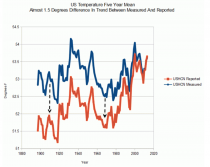
Enlarged
For more truthful tracking of the cycles, University of Alabama Huntsville, Climatologists Dr. John Christy and Roy Spencer, defined a subset of stations that are properly sited and not contaminated by urbanization in the country at nights. The US Climate Reference Network record from 2005 shows no obvious warming during this period. Each month, this data is updated by NOAA and Watts Up with That.
The graph shows the Average Surface Temperature Anomaly for the contiguous United States since 2005. The data comes from the U.S. Climate Reference Network (USCRN) which is a properly sited (away from human influences and infrastructure) and state-of-the-art weather network consisting of 114 stations in the USA.
These station locations were chosen to avoid warm biases from Urban Heat Islands (UHI) effects as well as microsite effects as documented in the 2022 report Corrupted Climate Stations: The Official U.S. Surface Temperature Record Remains Fatally Flawed. Unfortunately, NOAA never reports this data in their monthly or yearly “state of the climate report.” And, mainstream media either is entirely unaware of the existence of this data set or has chosen not to report on this U.S. temperature record.
CROP YIELDS
The nighttime warmth in the cities has no effect on crops, largely because crops are grown in rural areas.
Yields for crops continue to rise. Our yields for corn, beans and wheat are routinely setting new records. The occasional drought year is the exception not the rule and when they come the yields are higher than previous droughts.
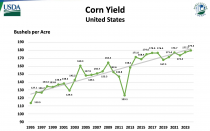
Enlarged
DAYTIME TEMPERATURES ARE NOT AFFECTED
Almost all (24 of 50 states) set their all-time record highs in the 1930s.
